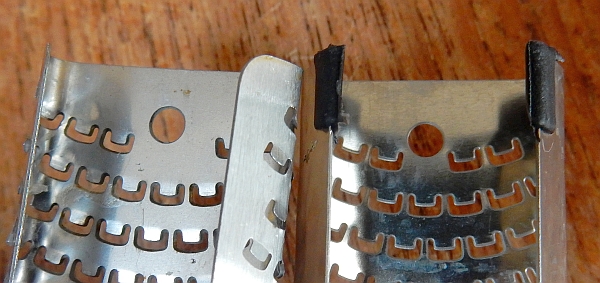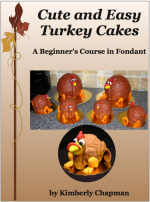Disclaimer: I received a free sample of this product in exchange for an honest review and to post Amazon promotional codes. I do not have my own Amazon affiliate link at this time so this post contains promotional codes that need to be entered at checkout before January 1, 2017, but this post does not contain affiliate links. All Amazon links are direct links only. The only compensation I have received for this post is the free grater.
Shortly before the biggest cake show of the year, I was asked if I would be willing to test and promote the new Deiss® PRO Citrus Lemon Zester & Cheese Grater, which is a mouthful of a title for what I’d otherwise call a microplane grater. I replied that we use microplane graters in our household all the time – primarily for Parmesan cheese, nutmeg, and zesting lemons – and that I’d be happy to give it a whirl and share discount codes with my readers, as long as I could do it after the Birmingham show.
So this thing arrived in the mail and I thought, “Yup, that’s a microplane grater, I’ll get to that in a few weeks.” Because at first glance other than the bright yellow handle, it just looks like every other microplane grater we’ve ever had, and while we ought to replace them more often than we do – because they do get dull after a few years and we really do use them a lot – shopping for a grater tends to be based on convenience and price more than features. I mean, it’s a grater, right? It’s a series of itty bitty blades that shred things. What’s to separate out one from the rest?
Well, I was surprised when I actually used it to find a really cool feature none of our other graters have had, and my husband has decided the Deiss is his new favourite as well. It’s a tiny thing that we didn’t even notice at first until I was grating up some Parmesan and realized I could put the tip of the grater down on the board and push the cheese without the grater slipping around. It was novel enough that I had my husband come take a photo of me doing it:

By resting the tip down on the cutting board, I was able to push the cheese against the grater firmly and get beautifully thin wisps super fast. The metal part held firm with no dangerous flexing.
This is accomplished by two little rubber feet at the end of the grater:

Those two tiny black feet make a huge difference!
To contrast, here’s the Deiss (on the right) alongside our old grater, which worked fine for grating but we could never put down on its tip without it slipping under pressure:

The old grater is on the left with no rubber feet, the Deiss is on the right with black rubber feet.
To get around the slipping, typically with the old grater we’d grate over a bowl. For ingredients that only need approximate measuring – such as how I grate nutmeg directly into a cookie recipe because I know it’s “about that much” and then “a bit more because I like nutmeg” – that’s still the easiest way to do it, as I did with the Deiss here:

Never buy pre-grated nutmeg. It loses its flavour quickly. Always buy whole nutmeg and grate it fresh as needed. Trust me on this…you haven’t had proper nutmeg flavour if you only buy pre-grated stuff. I’m not even being a food snob about it, I promise! I buy premade pastry crusts, pre-shredded mozzarella, and pre-chopped frozen onion and garlic. I’m not against you saving time, but nutmeg isn’t the place to do it!
But with cheese or an ingredient that needs to be measured, having to put the grater across a bowl means either using a large bowl that then needs cleaning, or using a small bowl that isn’t as stable and then you’re only using a small portion of the blades, so it takes longer. Being able to speed-grate a pile of fluffy Parmesan on a small cutting board is definitely preferable.

Mmm, fluffy fresh Parmesan. If you’re going to buy pre-grated Parmesan, at least make sure it’s refrigerated and fresh. If it’s on the store shelf, it’s got other things in there to keep it from caking or growing mould, and you lose the flavour and creaminess of this glorious cheese.
I meant to make something with lemon zest in time to do this post, but because I was so ill for weeks after the Birmingham show I haven’t done enough cooking and I realized I have to get this post done now so you all have time to use the discount codes before they expire! But I can’t wait to be able to speed-zest a lemon using a cutting board like this soon. It’s more stable, too, and I can tell you from all-too-frequent experience that grating your fingers while zesting a lemon is a real test of how many swear words you can spew in a matter of seconds.
In fact it’s telling that the Deiss has not claimed its first taste of blood yet. Usually a new grater, peeler, or knife has already sampled human flesh if it’s been in our house this long. We’re really rather horribly clumsy, and now that I’m typing this I’m pretty sure the Deiss can hear me and is just waiting for me to finish posting this and then it’s going to hunt me in my sleep, but until you see an update of my demise assume that this pleasant little feature is actually helping to prevent us from putting a little bit of ourselves into every dish!
It does come with a guard that snaps on and off (a little awkwardly, to be honest…we’ve had graters where they slide on more easily than this one), but we don’t tend to hurt ourselves on things in the drawer nearly so much as grappling with slippery cheese or the ends of nutmegs.

The guard has holes in it. I’m not sure what for, although it’s possible that they help prevent moisture building up in there because that sometimes did happen with our old one and the slide-on guard if we put it away before it was completely dry. And all graters are a pain to dry. Really, seriously, just leave it in the drainboard overnight. And remember to wash it before you need it because if you try to grate dry things like nutmeg or even Parmesan while there’s still moisture in the holes, it all gets gummy. Don’t do that. Protip.
Anyway, all in all we’re quite pleased with the Deiss, and not just because whenever you get a new grater you realize how hard you were working with your old dull one, but because those tiny rubber feet actually do make a difference. Our household now requires that all future graters have this feature!
To get your own, here are links for Amazon.com and Amazon.co.uk. Use the corresponding code beside the link at checkout (where it asks you if you have a gift card or promotional code) to save US$1.50 or UK£1.48 until January 1, 2017.
For Amazon.com click the link below and use the code OPFL2K2X
https://www.amazon.com/Deiss-Citrus-Zester-Cheese-Grater/dp/B00WGSYA46/
For Amazon.co.uk click the link below and use the code ICM2QKR4
https://www.amazon.co.uk/Deiss®-Citrus-Zester-Cheese-Grater/dp/B00WGSYA46/
















































































